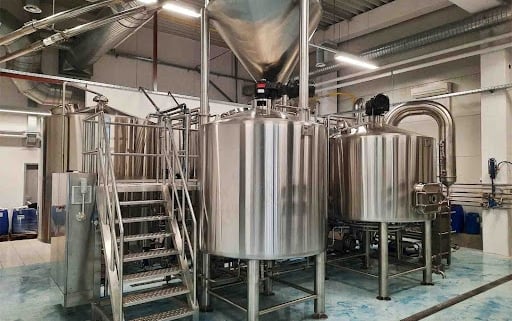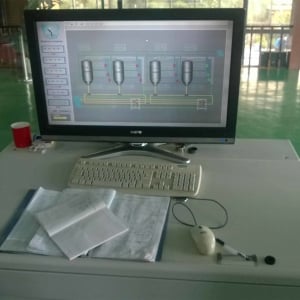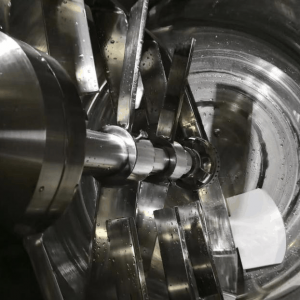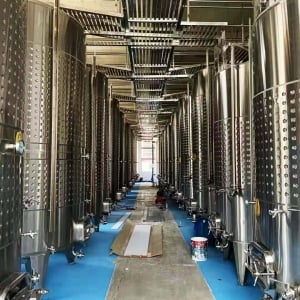The Ultimate Guide to Commercial Fermentation Tanks
Commercial fermentation tanks are the unsung heroes behind the production of various fermented products like beer, wine, kombucha, and many other popular beverages. Whether you’re starting a new brewing business or expanding an existing one, understanding the intricacies of fermentation tanks can make all the difference in the quality and efficiency of your production process.
In this guide, we’ll dive deep into everything you need to know about commercial fermentation tanks, from types and features to installation, operation, and maintenance. We’ll also compare suppliers, discuss customization options, and help you make an informed decision. Let’s get started!
Overview of Commercial Fermentation Tanks
Fermentation tanks are specialized vessels designed to facilitate the fermentation process in the production of beverages like beer, wine, and spirits. These tanks control the environment in which fermentation occurs, including temperature, pressure, and oxygen levels, ensuring consistent product quality.
When choosing a commercial fermentation tank, factors such as size, material, and design are crucial to consider. This section provides an overview of the key aspects you need to understand before investing in a fermentation tank.
Key Points:
- Purpose: Facilitating the controlled fermentation of beverages.
- Materials: Typically stainless steel, but also available in glass and plastic.
- Sizes: Range from small-scale tanks for microbreweries to large tanks for industrial production.
- Designs: Vary in shape and additional features like insulation and cooling jackets.
Understanding the Equipment: Commercial Fermentation Tank Guide
Choosing the right commercial fermentation tank can be daunting with the variety of options available. To help you navigate this, we’ve put together a detailed guide on the essential aspects of these tanks.
Types of Commercial Fermentation Tanks
There are various types of fermentation tanks, each designed to meet specific production needs. Here’s a detailed look at the main types:
| Type of Tank | Description | Best For |
|---|---|---|
| Conical Fermentation Tanks | Shaped like a cone, these tanks allow for easy separation of sediment. The cone shape enables yeast collection and reuse. | Beer brewing, cider production |
| Flat-bottom Fermentation Tanks | Feature a flat bottom, making them easy to clean and maintain. However, they do not allow for sediment collection. | Wine production, small breweries |
| Cylindroconical Tanks | A hybrid of cylindrical and conical designs, these tanks combine the benefits of both. They are versatile and efficient. | Versatile applications across different beverages |
| Open-top Fermentation Tanks | These tanks are open at the top, making them suitable for certain types of fermentation like that of red wine, where oxygen exposure is necessary. | Red wine production, artisanal beverages |

Presenting the Brewing Process
Understanding the brewing process and how it interacts with your fermentation tanks is vital for producing high-quality beverages. Let’s break down the process:
- Mashing: This is where the brewing begins. Grains are mixed with hot water to convert starches into fermentable sugars.
- Boiling: The mash is then boiled, typically with hops, to create the wort, which is the liquid that will eventually ferment into beer.
- Fermentation: The wort is transferred to the fermentation tank, where yeast is added. This is where the magic happens—yeast consumes the sugars and produces alcohol and CO2.
- Conditioning: After primary fermentation, the beer is left to condition in the tank, allowing flavors to mature and any remaining yeast to settle.
- Packaging: Finally, the beer is filtered and packaged into bottles, cans, or kegs for distribution.
Capacity, Space, Design, and Customization of Fermentation Tanks
When selecting a fermentation tank, it’s crucial to consider its capacity, space requirements, and the possibility for customization. The table below outlines these factors:
| Factor | Details |
|---|---|
| Capacity | Ranges from 1 barrel (31 gallons) to 1000 barrels (31,000 gallons) or more. Larger tanks are suitable for high-production breweries, while smaller tanks are ideal for craft breweries and experimental batches. |
| Space Requirements | Space constraints play a significant role in determining the size and shape of the tank. Vertical tanks save floor space, while horizontal tanks may be easier to clean and maintain. Consider ceiling height, doorway width, and the ability to move the tank within your facility. |
| Design Features | Insulated walls, cooling jackets, and pressure-rated designs are important for controlling the fermentation environment. Additional features include sampling ports, sight glasses, and manways for easy access. |
| Customization | Many manufacturers offer customization options such as adding extra ports, choosing different finishes, or altering the tank’s dimensions to fit specific spaces or production needs. Customization can be especially important for breweries with unique processes or space constraints. |
Suppliers and Price Ranges for Commercial Fermentation Tanks
The market offers a range of suppliers, each providing different price points and features. Here’s a breakdown of some of the most well-known suppliers and the price ranges for their fermentation tanks:
| Supplier | Price Range | Notable Features |
|---|---|---|
| BrewBuilt | $2,500 – $25,000 | Offers a wide range of sizes with customizable options. Known for high-quality stainless steel tanks. |
| SS Brewtech | $3,000 – $20,000 | Renowned for innovation and advanced features like temperature control systems. |
| Speidel | $1,500 – $15,000 | German-made tanks, recognized for durability and precision engineering. |
| Premier Stainless Systems | $5,000 – $30,000 | High-end tanks with extensive customization options and top-tier craftsmanship. |
| Glacier Tanks | $2,000 – $18,000 | Affordable options with a focus on practicality and reliability. Great for startups and smaller operations. |
Considerations:
- Cost versus quality: Higher-priced tanks often come with better features, more robust construction, and longer warranties.
- Lead times: Custom tanks may take longer to produce and ship. Ensure you factor in lead times when planning your production schedule.
- Warranty and support: Consider the after-sales support and warranty offered by the supplier. Good customer service can be invaluable in case of any issues.
Installation, Operation, and Maintenance of Fermentation Tanks
Proper installation, operation, and maintenance of your fermentation tanks are essential to ensure smooth production processes and longevity of your equipment.
Installation Considerations
| Installation Aspect | Details |
|---|---|
| Site Preparation | Ensure the installation site is level, with adequate space for the tank and any necessary accessories. Consider the proximity to utilities like water and power sources. |
| Transport and Handling | Larger tanks may require special handling equipment for transportation and positioning. Work with the supplier or a professional rigging company to avoid damage during installation. |
| Utility Connections | Tanks will need to be connected to utilities such as water, electricity, and sometimes glycol cooling systems. Plan for these connections in advance to ensure smooth installation. |
| Compliance and Permits | Depending on your location, you may need permits for installing and operating commercial fermentation tanks. Check with local authorities to ensure compliance with all regulations. |
Operation Guidelines
Operating fermentation tanks requires attention to detail and adherence to best practices to ensure the quality and consistency of your product.
- Temperature Control: Maintain optimal fermentation temperatures using cooling jackets or external cooling systems. The ideal temperature varies depending on the beverage being produced.
- Pressure Management: Some fermentation processes require pressure control. Ensure your tank is equipped with pressure relief valves and that these are regularly checked and maintained.
- Cleaning and Sanitation: Regular cleaning and sanitation are crucial to avoid contamination. Use a CIP (Clean-In-Place) system if available, and follow recommended cleaning protocols for your specific tank and product.
Maintenance Tips
| Maintenance Task | Frequency | Details |
|---|---|---|
| Visual Inspection | Weekly | Check for any signs of wear, leaks, or damage. Pay special attention to seals, welds, and connections. |
| Pressure Valve Testing | Monthly | Ensure all pressure relief valves are functioning correctly to prevent over-pressurization. |
| Cleaning | After every use | Use appropriate cleaning agents and methods as recommended by the manufacturer. Avoid abrasive cleaners that could damage the tank’s surface. |
| Calibration of Sensors | Quarterly | If your tank is equipped with temperature or pressure sensors, ensure they are calibrated regularly for accurate readings. |
| Annual Maintenance | Annually | Consider a comprehensive service by a professional technician to maintain the tank’s integrity and functionality over time. This may include checking welds, replacing gaskets, and inspecting cooling systems. |
How to Choose the Right Supplier for Commercial Fermentation Tanks
Choosing the right supplier is as important as selecting the right tank. The supplier’s reputation, support, and customization options can significantly affect your overall experience and the quality of your final product.
Factors to Consider When Choosing a Supplier
| Consideration | Details |
|---|---|
| Reputation | Look for suppliers with a solid reputation in the industry. Check reviews, ask for references, and consider how long they’ve been in business. |
| Customization Options | Ensure the supplier offers customization options that meet your specific needs. This includes tank size, additional features, and design modifications. |
| Support and Warranty | A supplier that offers robust customer support and a strong warranty can be invaluable, especially if you encounter any issues with the tank. |
| Lead Times | Be aware of the lead times for production and delivery. Suppliers with shorter lead times may be preferable if you’re on a tight schedule. |
| Cost | While cost is always a factor, it’s important not to sacrifice quality for price. Consider the long-term value of the tank rather than just the initial purchase price. |
| Compliance with Industry Standards | Ensure the supplier adheres to industry standards and regulations, such as those set by the FDA or local health authorities. This is particularly important for food and beverage production. |
Advantages and Limitations of Commercial Fermentation Tanks
Every piece of equipment has its pros and cons, and commercial fermentation tanks are no exception. Understanding these can help you make an informed decision when purchasing a tank.
Advantages
- Control over Fermentation Environment: With features like temperature control and pressure management, commercial fermentation tanks offer precise control over the fermentation process, ensuring consistent product quality.
- Durability: Made from high-quality materials like stainless steel, these tanks are built to last, withstanding the rigors of commercial production.
- Scalability: Whether you’re a small craft brewery or a large-scale production facility, there’s a fermentation tank that can scale to your needs.
- Customization: Many manufacturers offer customization options, allowing you to tailor the tank to your specific production requirements.
Limitations
- Cost: Commercial fermentation tanks can be expensive, especially when considering the need for multiple tanks for larger operations.
- Space Requirements: Larger tanks require significant space, which can be a limitation in smaller facilities.
- Maintenance: Regular maintenance is necessary to keep the tanks in optimal condition, which can be time-consuming and requires specialized knowledge.
- Complexity: Advanced features like temperature control and pressure management systems can add complexity to the operation and maintenance of the tank.
Comparing Commercial Fermentation Tanks: Pros and Cons
When comparing different commercial fermentation tanks, it’s essential to consider how they stack up against each other. Here’s a comparison of some common types:
| Tank Type | Pros | Cons |
|---|---|---|
| Conical Fermentation Tanks | Easy yeast collection, efficient sediment removal, widely used in the industry | More expensive, larger footprint |
| Flat-bottom Fermentation Tanks | Simple design, easier to clean, more affordable | Sediment can’t be easily removed, less efficient for certain processes |
| Cylindroconical Tanks | Combines the best of conical and flat-bottom designs, versatile | May be more expensive than other options, can be complex to clean |
| Open-top Fermentation Tanks | Ideal for specific fermentation processes like red wine, allows oxygen interaction | Risk of contamination, not suitable for all types of beverages |

FAQs
What size fermentation tank do I need?
The size of the fermentation tank you need depends on the scale of your production. For small breweries, a 1-10 barrel tank might suffice, while large operations may require tanks exceeding 100 barrels. Consider your production goals, space availability, and budget when choosing a size.
How do I clean a commercial fermentation tank?
Cleaning involves a CIP (Clean-In-Place) system, which circulates cleaning agents through the tank without disassembly. Regular cleaning with appropriate chemicals is necessary to prevent contamination and maintain product quality. Follow manufacturer guidelines for the best results.
Can I customize my fermentation tank?
Yes, many suppliers offer customization options. You can choose specific sizes, add extra ports or fittings, and select special finishes or insulation options. Customization allows you to tailor the tank to your specific production needs.
What materials are best for fermentation tanks?
Stainless steel is the most common and recommended material due to its durability, ease of cleaning, and resistance to corrosion. Other materials like plastic or glass may be used for smaller or specialized tanks but are generally less durable than stainless steel.
How much do commercial fermentation tanks cost?
The cost varies depending on the size, material, and additional features of the tank. Prices can range from $1,500 for smaller, basic tanks to $30,000 or more for large, custom-designed tanks.
What maintenance does a fermentation tank require?
Regular maintenance includes cleaning, inspecting seals and connections, testing pressure valves, and calibrating sensors. Annual professional inspections are recommended to ensure the tank remains in optimal condition.
Conclusion
Choosing the right commercial fermentation tank is a critical decision that can impact the quality and efficiency of your production. By understanding the types, features, and considerations outlined in this guide, you’re better equipped to make an informed choice that suits your needs.
Whether you’re a small craft brewer or a large-scale producer, the right fermentation tank can help you achieve your production goals, maintain consistent product quality, and scale your operations effectively. Remember, investing in a high-quality, well-maintained tank will pay off in the long run, ensuring your business runs smoothly and successfully.













